The Payment Gateways are core settings for any eCommerce website, therefore their proper configuration is essential for your Online Store’s functionality and success. WooCommerce 3.7.0 comes with four built-in payment gateways to choose from, additional gateways can also be added by using WooCommerce extensions. In this guide, we will review how you can configure your Payment Gateways with just a few clicks.
In order to begin, please first log in to your WordPress Admin Dashboard and navigate through the left menu bar to WooCommerce > Settings. Afterward, please switch to the "Payments" tab from the top menu bar.
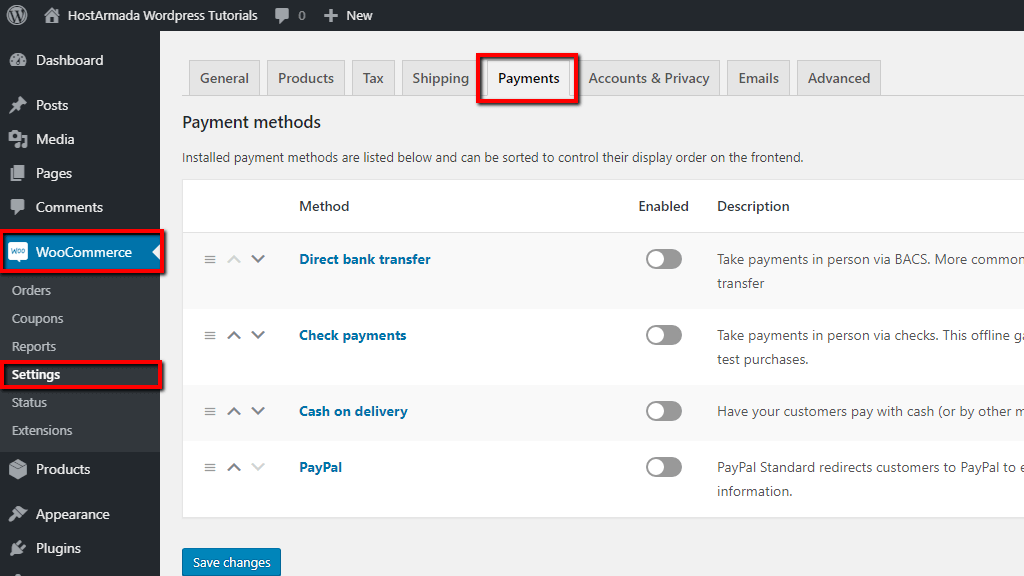
On this screen, you will see listed all the "payment gateways" that are currently installed and which gateways are enabled.
The order of the payment gateways you see on your backend will be presented to your customers during checkout. Meaning that the first active payment gateway in the list will be considered as a default payment method.
In order to organize your "shipping gateways", you can either click on the left handler which will allow you to drag and drop the gateways to the desired position or you can use the arrows which will move the gateway up and down.
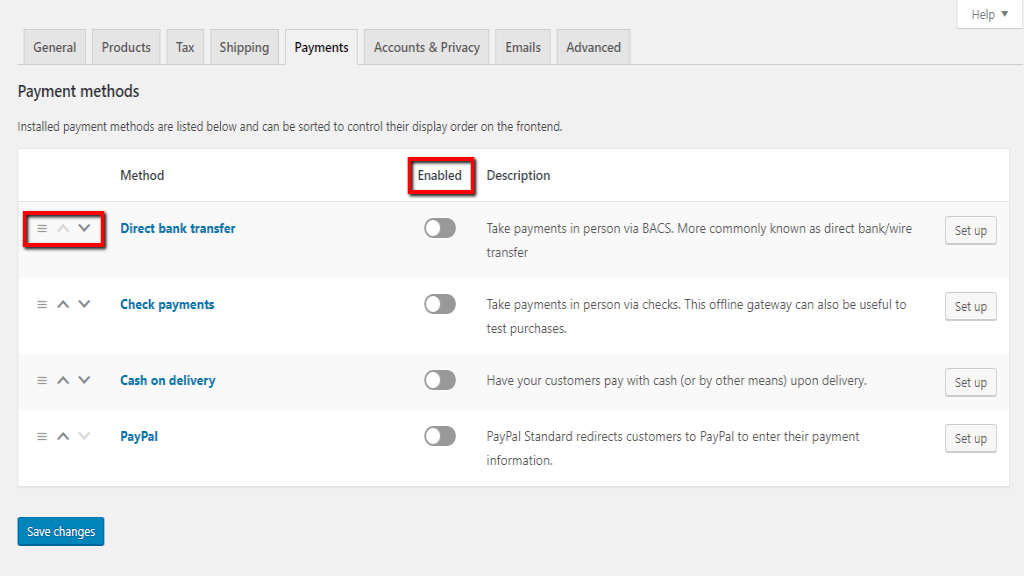
As you will notice at this point all the "shipping gateways" are disabled, in order to enable the gateways you want to use, please click on the "Enabled" toggle next to them. As soon as you set up your preferences, please make sure to click on the "Save changes" button and we can continue further to configure their settings.
After you have selected your preferred "payment gateways" it is time to configure their specific settings. We will thoroughly review each of the gateways and guide you on how to properly set them up.
The "Direct Bank Transfer" or "Bank Account Clearing System (BACS)" is a payment gateway that does not require payment to be made online. Orders submitted with "Direct bank transfer" will be put "On hold" until you manually process them after ensuring the payment was successfully received. The configuration of this option is pretty straightforward and easy to follow.
First, we will need you to click on the "Manage" button (which will appear as "Set up" in case the gateway is not yet enabled) on the right end.
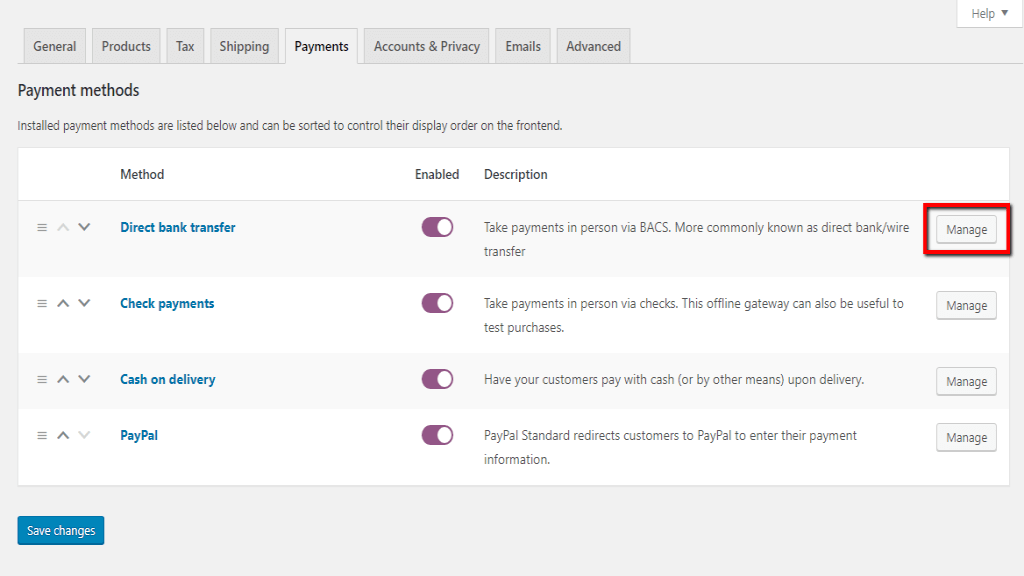
You will be presented with the "Direct bank transfer" setting screen where you will need to configure the following options.
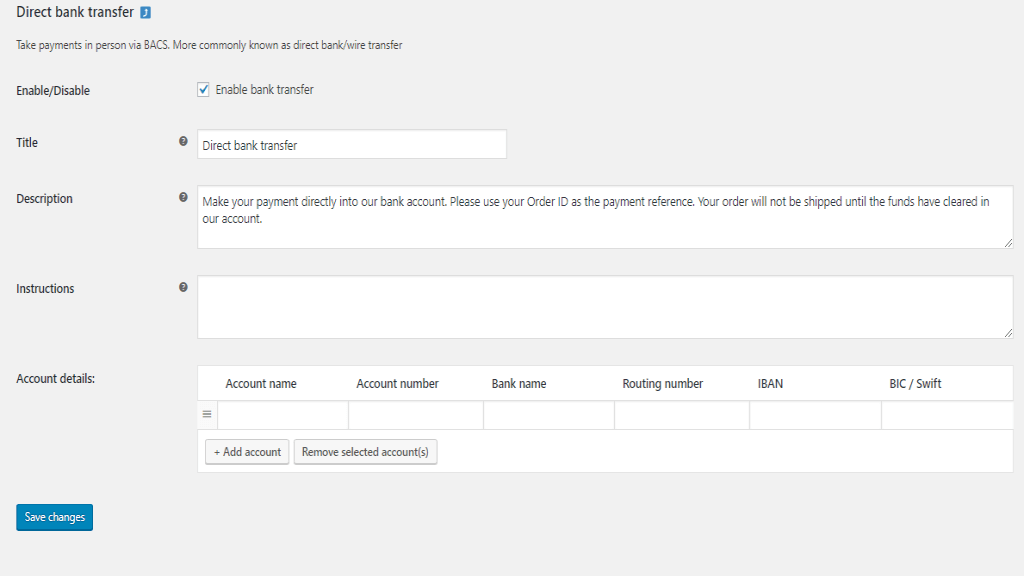
Lastly, just click on the "Save changes" button and you will be all set to start receiving payments from your customers.
Similarly to the "Direct bank transfer" the "Check Payments" gateway does not require an online payment to be submitted. The order will be set to "On hold" status until you successfully receive the payment and process them manually. The configuration of this payment gateway is even simpler compared to the previous one.
Again, we will need you to start by clicking on the "Manage" button which will present a new screen with the gateway configuration options.
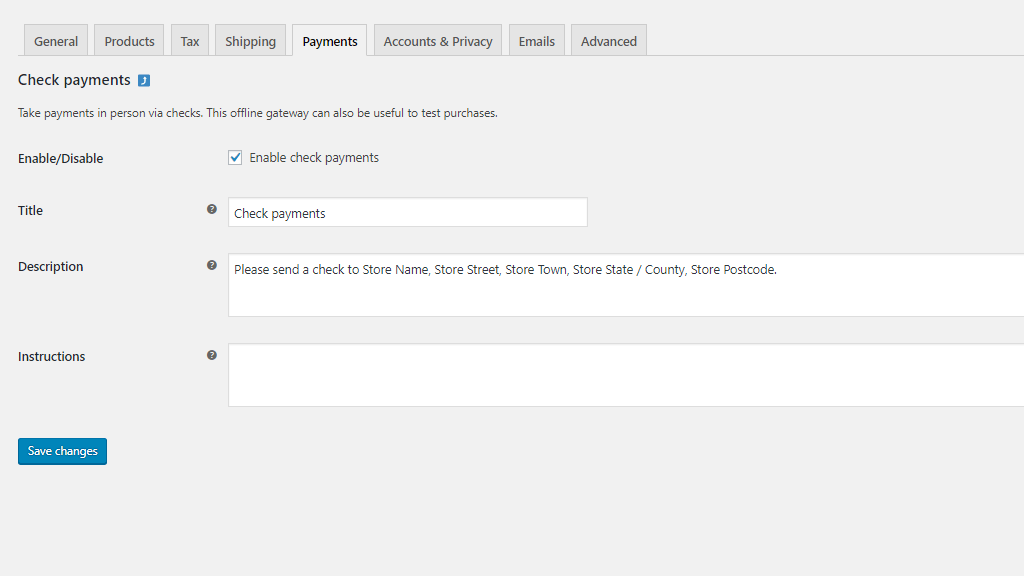
You will notice the options are quite fewer here and we have already gone through them in the previous section.
That is pretty much it. Now, please make sure to click on the "Save changes" button and you will be all set to start accepting check payments.
The "Cash on delivery" payment gateway does not require a payment to be submitted online either. If a customer selects it for a payment option the order will be set to "Processing" status until the payment is made upon delivery. As soon as the payment is successfully processed you will have to manually set the order status to "Completed".
Once again, we will need you to begin by clicking on the "Manage" button next to the "Cash on delivery" payment gateway, which will present you with the following configuration details.
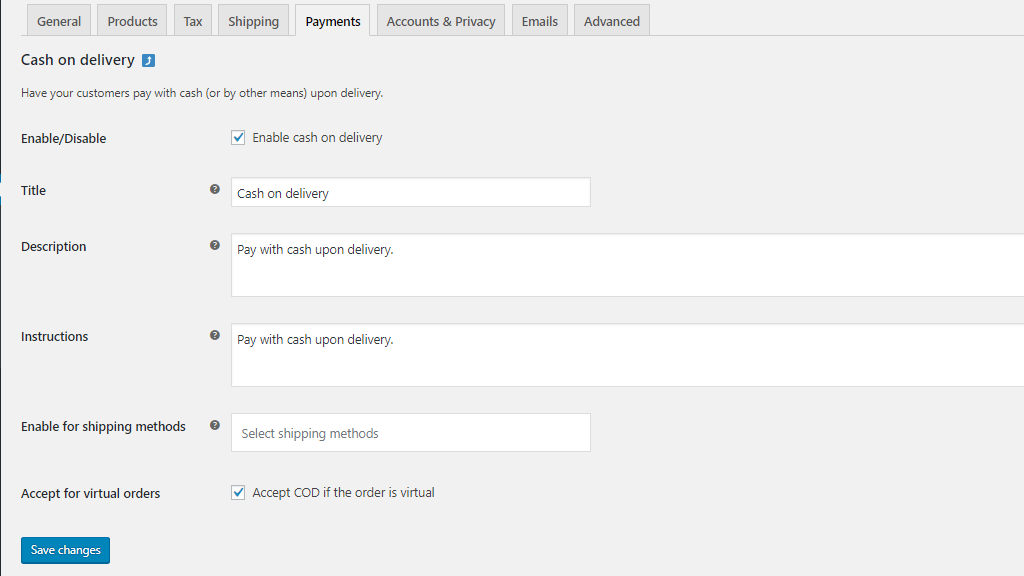
As you will notice the settings are the same like for the previous two payment gateways except the last two options.
After you are ready, please do not forget to click on the "Save changes" button and you will be ready to start collecting cash upon delivery.
PayPal is a worldwide used, recognized and trusted payment method. Enabling the PayPal Standard gateway will allow you to accept PayPal payments by redirecting your customers to PayPal’s secure page where their payments will be processed.
Before we begin, we would like to mention that having a PayPal Business account is mandatory for the configuration of this payment gateway. You can either create a new account or convert an existing personal account by going to paypal.com.
Now, the first step we will need you to take will be to click on the "Manage" button next to the "PayPal" payment gateway. This will present you with a new screen which is divided into a few sections.
Under the first section, you will be able to configure the general settings of the "PayPal" payment gateway.
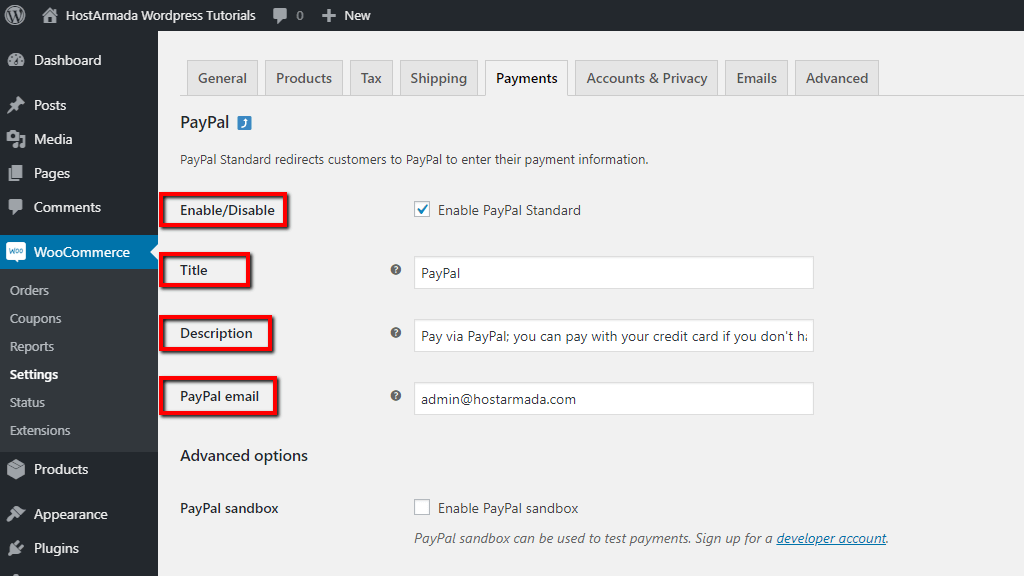
The first options you will see under this section will allow you to enable two useful testing and debugging tools.
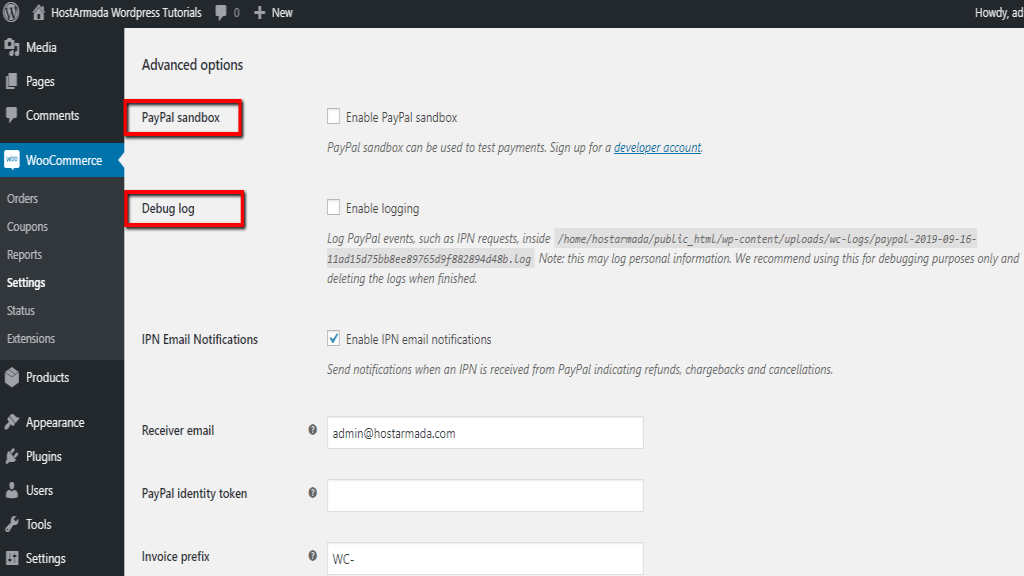
Moving forward you will notice the following options which are related to your PayPal management preferences.
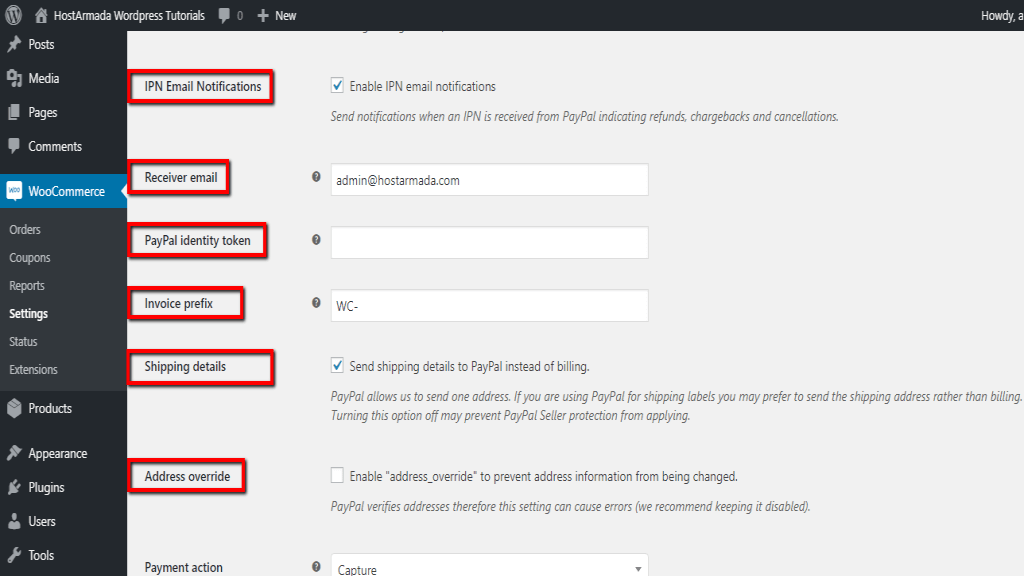
Next, you will notice three options related to the customer checkout process.
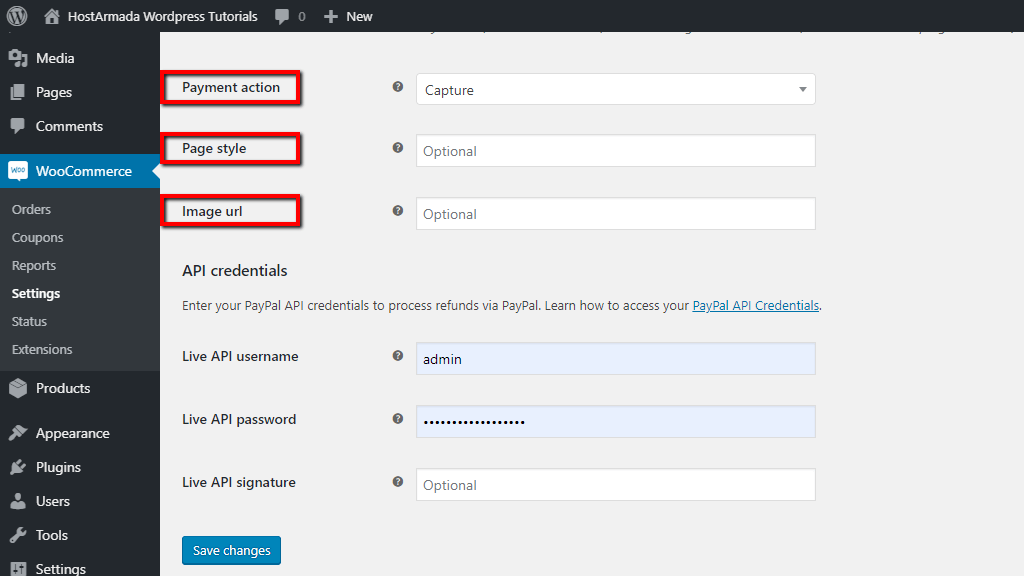
Configuring your API credentials is required in order to be able to process refunds to your customers directly from WooCommerce. If you prefer you can manage refunds from PayPal, however in this case you will need to manually edit your orders and charge their status from WooCommerce.
You can find those credentials by navigating through your PayPal account > My Selling Tools > API Access > NVP/SOAP API integration (Classic) > API signature. You can review the PayPal official documentation by clicking here.
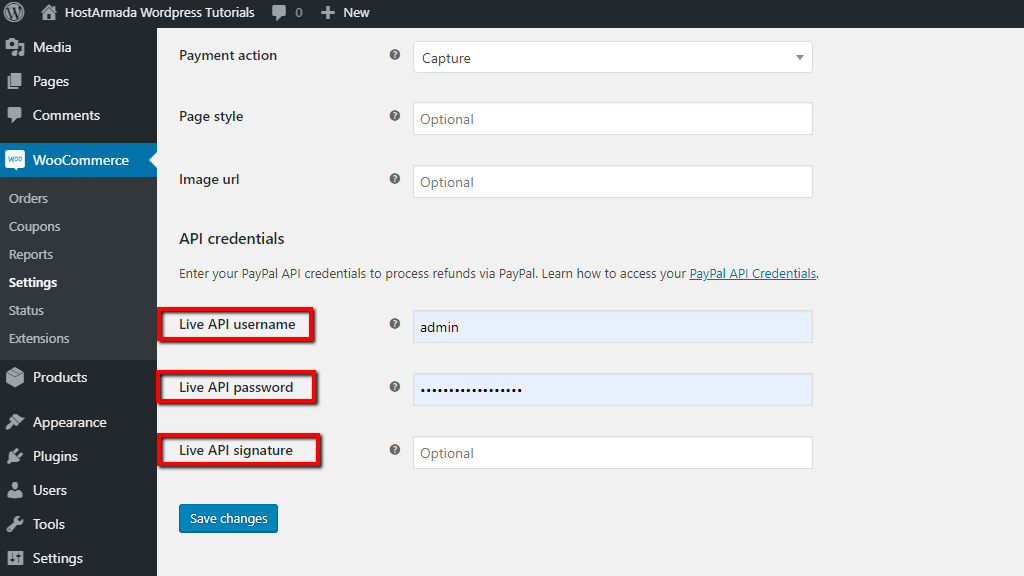
All you need to do is just to fill your "Live API username", "Live API password" and "Live API signature".
Once you are ready, please click on the "Save changes" button you will be ready to start accepting PayPal payments on your Online Store.
Congratulations! Now you have your payment gateways successfully configured and you are ready to start processing online payments on your eCommerce store. We hope that following our instructions helped you easily configure your settings and you did not have any difficulties. In case something was not clear or you happen to need further guidance, please do not hesitate to reach out to our Support Team.

Sebahat is a young and bright woman who has become an invaluable part of our team. She started as a Customer Care Representative, mastering that role and, along the way, growing into a tech-savvy individual who is well acquainted with every support layer of the company. Driven by her aim to improve our customers’ experience constantly, she is committed to enhancing the extraordinary support we deliver.